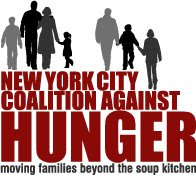Neighborhoods Struggle as Number of New York Groceries Drops by 1/3
 As climbing real-estate prices have forced neighborhood groceries across the city to close, many New Yorkers are rapidly losing access to fresh food sources. While high-end grocers have recently seen an increase in profits, the total number of supermarkets in the five boroughs has dropped by one third in the past six years. Grocers have been unable to absorb the soaring cost of rent, especially in areas of rapid real-estate development. The lack of local grocers has already led to higher rates of obesity and diabetes in Bronx neighborhoods, as residents turn to bodegas as their primary source of food. The city hopes to deter this trend by introducing Green Carts to struggling neighborhoods and encouraging bodegas to stock healthier products, while state officials have announced plans for a supermarket commission to address the needs of both grocers and food-scarce neighborhoods.
As climbing real-estate prices have forced neighborhood groceries across the city to close, many New Yorkers are rapidly losing access to fresh food sources. While high-end grocers have recently seen an increase in profits, the total number of supermarkets in the five boroughs has dropped by one third in the past six years. Grocers have been unable to absorb the soaring cost of rent, especially in areas of rapid real-estate development. The lack of local grocers has already led to higher rates of obesity and diabetes in Bronx neighborhoods, as residents turn to bodegas as their primary source of food. The city hopes to deter this trend by introducing Green Carts to struggling neighborhoods and encouraging bodegas to stock healthier products, while state officials have announced plans for a supermarket commission to address the needs of both grocers and food-scarce neighborhoods.
 As climbing real-estate prices have forced neighborhood groceries across the city to close, many New Yorkers are rapidly losing access to fresh food sources. While high-end grocers have recently seen an increase in profits, the total number of supermarkets in the five boroughs has dropped by one third in the past six years. Grocers have been unable to absorb the soaring cost of rent, especially in areas of rapid real-estate development. The lack of local grocers has already led to higher rates of obesity and diabetes in
As climbing real-estate prices have forced neighborhood groceries across the city to close, many New Yorkers are rapidly losing access to fresh food sources. While high-end grocers have recently seen an increase in profits, the total number of supermarkets in the five boroughs has dropped by one third in the past six years. Grocers have been unable to absorb the soaring cost of rent, especially in areas of rapid real-estate development. The lack of local grocers has already led to higher rates of obesity and diabetes in 
3 comments:
You write that the "lack of local grocers has already led to higher rates of obesity and diabetes"
That's a pretty strong claim. Is there evidence that the lack of grocers causes (leads to)obesity and diabetes? How was that shown?
Daniel,
We, as well as the Washington Post, may have overstated the causal relationship between less groceries and obesity in the Bronx. However, we continue to stress that a confluence of circumstances, which includes a dearth of fresh fruits and vegetables and a reliance of convenient, pre-packaged food, does lead to health problems in the Bronx and neighborhoods across the city.
For more information on the link between grocery access and diabetes and obesity rates, see: http://www.publichealthadvocacy.org/designedfordisease.html
Post a Comment